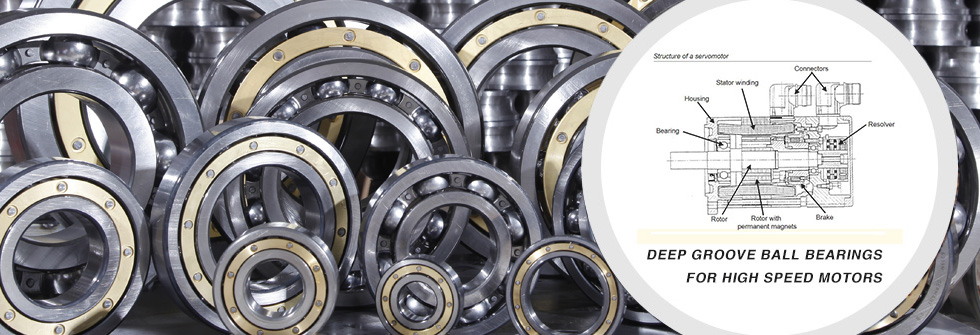Electric motor bearings’ purpose and key points for designing
2015-12-17The purpose of a bearing in an electric motor is to support and locate the rotor, to keep the air gap small and consistent and transfer the loads from the shaft to the motor. The bearings should be able to operate at low and high speeds whilst minimizing frictional loses. At the same time the bearing must be economic and require absolutely minimal maintenance (if any).
The following points should be considered for bearings during motor design
Loads
- Weights and forces involved
- Power transmitted
- Magnetic pull as a result of unsymmetrical air gaps
- Dynamic forces due to inaccurate adjustment
- Out-of-balance situations
- Pitch errors in gears
- Potential thrust loads
Heavy loads are usually left to roller bearings and lighter loads are carried by ball bearings. Drive forces are only taken into consideration when belts or gears are used. When belts or gears are used then radial and axial forces can develop. Evaluating the magnitudes and directions of all these loads will have direct relevance on your choice of bearing. For example, cylindrical rollers can carry high radial loads but virtually no axial loads. Other bearings such as angular contact ball bearings can carry radial and axial loads.
Speed
The prescribed shaft speed will have a direct effect on the choice of lubricant, bearing size, cage design, internal clearance and shield/seal types. Induction motors and pulse modulation motors can produce electrical pitting or ribbing on bearing raceways, hence insulated bearing options may want to be considered.
Coupling with gears or belts
The type of motor connection will produce load on the motors bearings. A coupling drive can produce forces in various directions; hence alignment is of key importance here. In many cases a roller bearing with a degree of shaft float is used at the drive end and at the other a ball bearing, hence fixing the float direction and magnitude. A belt or gear take off can place higher loads than a coupling; hence this should be looked at carefully.
Vertical mounting arrangements
Motors, which are to be operated vertically, should have special consideration. Bearing arrangement is vital in vertical mounting, as are lubricant requirements.
Operating Environment
High humidity or damp conditions will require the bearing to have seals or shields. Solid contamination such as dust, mud, wood chips, metal flakes and other solid material will also require the bearing to have shields or seals. It should be born in mind that where solid contamination is high then secondary forms of sealing are desirable.
Temperatures
- Ambient temperatures
- Operating temperatures
Bearings generate their own heat but most heat will come from the rotor. Either air, oil or water can be used to cool the bearing however when their is the possibility of a high temperature gradient from the inner ring to the outer ring then special attention should be paid to the internal clearance. If no care is taken preloading could occur which will quickly lead to bearing failure.
Vibration
In high vibration conditions cylindrical roller bearings provide the most resistance although special care should be taken over cage selection.
Low noise
Some applications require low noise bearings in which case deep groove bearings coupled with low noise grease provide the best solution. Bearing clearance can also have an effect here.
Bearing life
The life of a bearing is defined as the number of revolutions (or the number of operating hours at a given constant speed) the bearing can endure before the first sign of fatigue. The service life of a bearing depends to a large extent on the operating conditions while procedures used to mount and maintain it are equally important.
Lubrication
Grease lubrication should always be used where possible in motor applications. It simplifies maintenance and prolongs bearing life. Where speeds and temperatures are high then oil lubrication should be considered.
Maintenance
Motor maintenance normally consists of:
- Servicing of the stator windings
- Lubrication of the bearings
- Monitoring of the motor performance
Permanently lubricated bearings that have shields or seals fitted do not require any relubrication, thus these are maintenance free.
Precision
The accuracy of the equipment will determine the accuracy of the precision grade of the bearings. For high precision bearings (normally associated with high speeds) the seating areas on the shaft need to be machined to corresponding levels of surface finish and roundness + concentricity.











